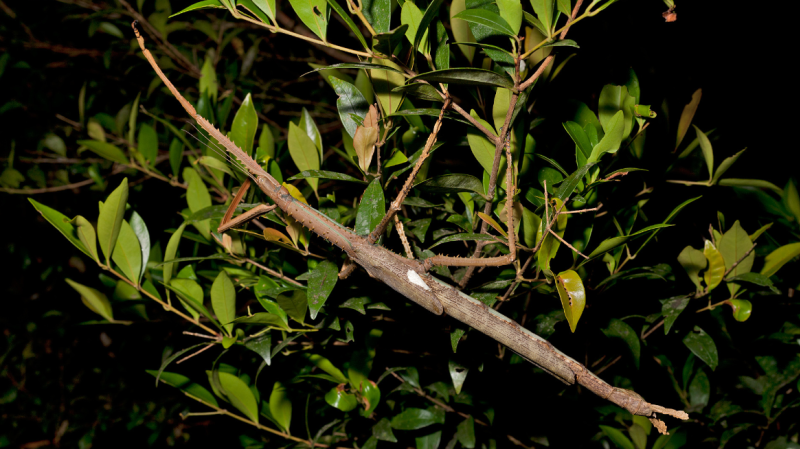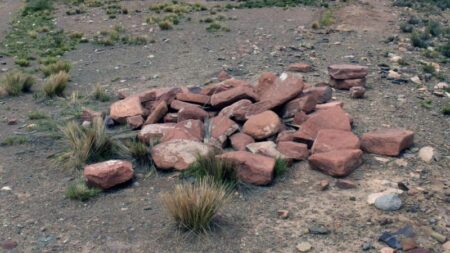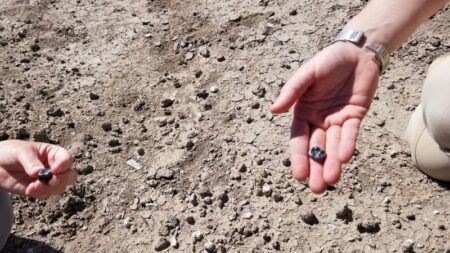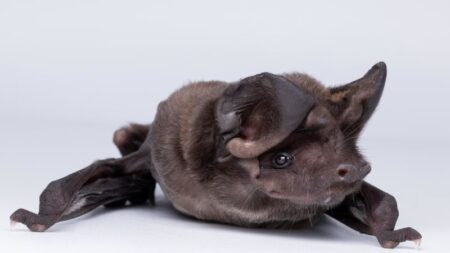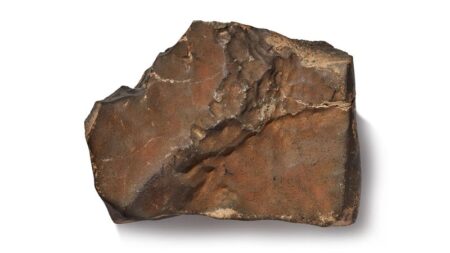In a remarkable discovery, scientists have identified a new species of stick insect in Australia’s remote rainforests, an area notorious for its hazardous wildlife, including venomous snakes and spiders. This newly identified insect, termed **Acrophylla alta**, is believed to be the heaviest stick insect found in Australia to date. The colossal creature’s weight reaches up to 44 grams (approximately 1.55 ounces), which is comparable to the weight of a common golf ball. In addition to its weight, the insect measures an impressive length of 40 centimeters (about 15.75 inches), making it an exceptional find within entomological circles.
The team responsible for this groundbreaking discovery includes researchers from James Cook University, where **Angus Emmott** took the lead on identifying the new species. Emmott posited that the significant size of **Acrophylla alta** could be attributed to evolutionary adaptations in response to its unique habitat. He articulated that the insect’s substantial body mass likely provides a survival mechanism against the cooler, wetter conditions prevalent in its environment. Over millions of years, these insects have developed increased size as an evolutionary trait to cope with the climate, according to Emmott’s statements in a recent media release. As he conveyed, “From what we know to date, this is Australia’s heaviest insect.”
The habitat of this giant stick insect is situated within the mountainous Wet Tropics region of Far North Queensland, positioned in Australia’s northeastern part. This chic canopy environment, with its rich biodiversity and challenging accessibility, is likely the primary reason this species had remained elusive for so long. Emmott explained that the insect’s isolation in a high-altitude rainforest area limits human encounters. He noted, “It’s restricted to a small area of high-altitude rainforest, and it lives high in the canopy. So, unless you get a cyclone or a bird bringing one down, very few people get to see them.”
Additionally, the unique eggs of the stick insect were pivotal in its classification as a distinct new species. Emmott underscored the individuality of stick insect eggs, pointing out that “[e]very species of stick insect has their own distinct egg style.” These eggs feature varying surfaces, textures, and shapes, contributing to the overall diversity within stick insect species. Each egg cap also has its unique characteristics, making identification possible.
As part of the ongoing research and preservation efforts, two specimens of **Acrophylla alta** have been incorporated into the collection at the **Queensland Museum**. This addition is expected to support future research initiatives aimed at enhancing our understanding of these insects and their ecosystems. By studying the specimen in a controlled environment, entomologists and researchers will have the opportunity to further explore the biology, behavior, and ecological roles of this fascinating insect.
In conclusion, the discovery of **Acrophylla alta** not only adds a significant entry to the catalog of Australia’s biodiversity but also highlights the rich and often unexplored wildlife residing in the nation’s rainforests. The insect’s distinctive features and evolutionary adaptations demonstrate the intricate interplay between species and their habitats, showcasing nature’s capability to innovate and thrive under varying climatic conditions. The ongoing exploration of such remote areas may yield even more surprises in the years to come, emphasizing the importance of continued research and conservation efforts for Australia’s extraordinary and diverse wildlife.






